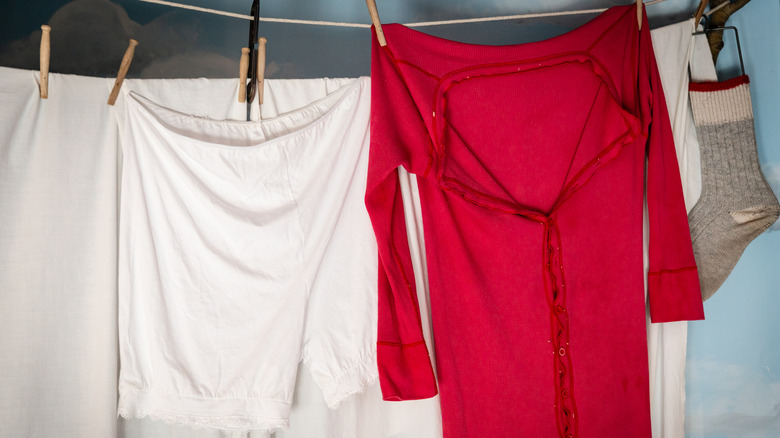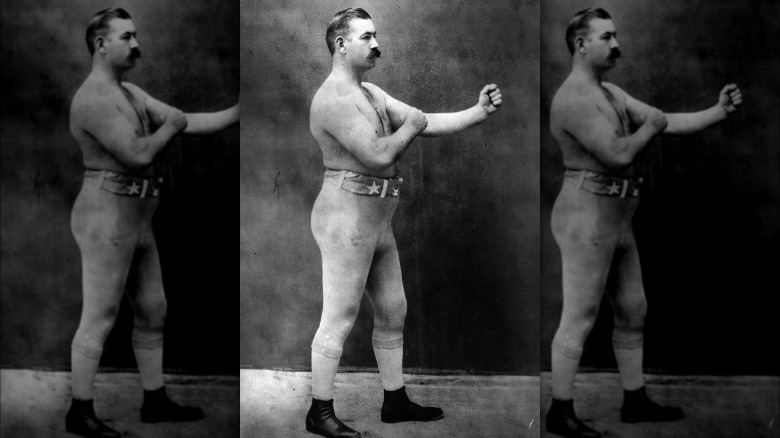The Sporting Theory Behind The Origin Of Long Johns
For warmth, comfort, and protection, humans have worn some form of underwear for thousands of years, according to CNN. Over the centuries, those garments have had many different shapes and sizes and have been made from many different kinds of materials. Those who live in cold climates, and in particular men, often wear long or thermal underwear made from cotton, wool, or flannel, with a weave or waffle-like texture — a style of undergarment known as "long johns," according to the Farmers' Almanac.
Take a look at a pair of long johns, and it's clear where the "long" part of the name comes from — pants-length long johns cover the whole leg of the person who wears them, making them particularly effective in colder weather. But what about "john?" Does that also mean something? There are a few theories about where the name "john" in "long johns" came from. Some say it refers to a 17th-century knife fighter known to fight in nothing more than his underwear. Others contend "long john" could come from the French two-word phrase "longues jambes," or long legs. A third theory, though, says the origin of long john comes from a particularly colorful character in sports history.
Long johns and union suits
No matter where the name long johns really comes from, what's for certain is that men have worn similar articles of clothing since at least the 19th century. From the mid-1840s, in fact, men wore something called "union suits," a type of clothing like long johns and an undershirt made from similar material, but all in one piece, according to Merriam-Webster — a long john onesie, if you will. Union suits, as Merriam-Webster also writes, served a dual purpose: to keep the person wearing them warm, but to also protect outer clothing from sweat.
Today, the term long johns can mean pants-length underwear with a so-called "trap door" in the back and a separate undershirt, like a union suit, just in two pieces. For others, though, long johns — sometimes called thermals or simply long underwear — refer only to the ankle-length underpants, as Merriam-Webster elsewhere notes. As can be seen, union suits and long johns are clearly related in both form and function. It's under that latter definition, though, that the most common and prevalent theory of where long johns come from has its roots.
John L. Sullivan boxed in just his underpants
One popular theory about the origins of the term relates to a 19th-century American boxer, and it's a tale of two Johns. One of them was British clothing designer John Smedley, who is typically credited with marketing long johns to the public, and whose family had been in the textile industry for generations, according to Summit Daily. The name long john, though, is not thought to have been adopted from Smedley's first name, but instead, chosen in honor of American heavyweight champion boxer John L. Sullivan, also known as the Boston Strong Boy (pictured).
As Farmers' Almanac goes on to explain, Sullivan — the last heavyweight champion bareknuckle fighter who won championships both gloved and bareknuckle — was known to fight in his long underwear, and that, according to one popular theory, explains where the name long johns comes from. Regardless of the true origin of long johns, their popularity skyrocketed as droves of men headed west during the North American Gold Rush, among other types of hard outdoor work conducted in cold conditions. The two-piece long john design was patented in 1915, and to this day, both as a one-piece or in a shirt and pants combo, they remain a popular clothing item for hard work in cold climates or for winter recreation.


